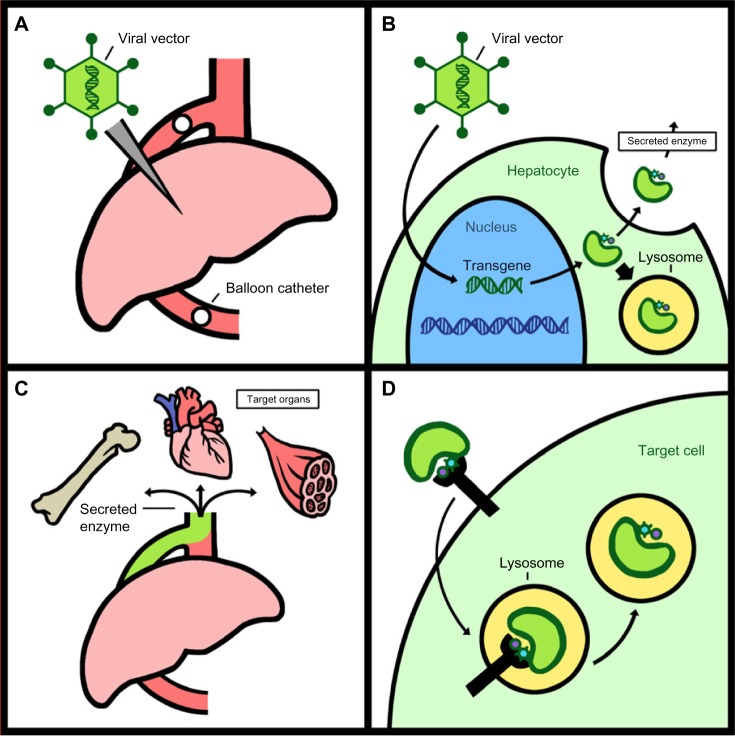Figure 1.
Systemic cross-correction.
Notes: LSDs are practical targets for gene therapy because cells that are corrected by gene therapy can secrete the transfected lysosomal enzyme, which can then be taken up by neighboring cells. Gene therapy can express superphysiologic amounts of enzyme in a target organ, such as the liver, that can then be excreted and travel to effected tissues through the blood. (A) The liver is infected with the viral vector. (B) The virus introduces its genetic cargo into the nucleus of hepatocytes. The hepatocytes produce superphysiologic amounts of enzyme, some of which are secreted. (C) Enzyme (green) enters the bloodstream and travels throughout the circulation, reaching the affected tissues. (D) Within these tissues, the enzyme binds receptors (black bar) and is trafficked to the lysosome.
Abbreviation: LSDs, lysosomal storage disorders.

